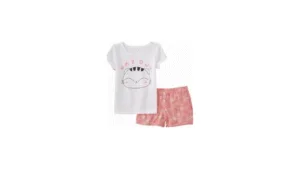news
A World of Imagination: Fostering Creativity and Confidence in Girls (4-6 Years Old)
Between the ages of four and six, a young girl’s mind is a fertile ground for creativity and imagination. She is on the cusp of formal schooling, and her play is becoming more complex, imaginative, and socially rich. This period is a critical window for fostering creativity, building self-confidence, and nurturing the foundations of her unique personality. This essay will explore the central role of imaginative play and creative expression in the development of girls in this age group and provide a comprehensive guide on how parents, educators, and caregivers can empower them to be confident, resilient, and resourceful individuals.
At four years old, a girl’s imaginative world is boundless. She can transform a simple cardboard box into a spaceship, a bedsheet into a magical tent, and a stick into a magic wand. Her ability to engage in complex make-believe is a sign of her burgeoning cognitive skills. This imaginative play is not a frivolous activity; it is a vital tool for learning. Through pretend play, she is practicing problem-solving, developing her communication and negotiation skills, and learning to understand and empathize with others. She can act out different social scenarios, working through her feelings and understanding the world around her. Encouraging this type of play, by providing her with open-ended toys and the freedom to create her own worlds, is one of the most important things a caregiver can do.

Beyond imaginative play, creative expression in its many forms is a key part of a young girl’s development. This is the age when she is ready to explore art, music, and dance as a way to express herself. Providing her with art supplies, like crayons, paints, and clay, allows her to explore textures and colors and to create her own visual stories. It also helps to develop her fine motor skills and hand-eye coordination. Listening to music and encouraging her to dance freely can help her to develop her gross motor skills and a love of movement. These creative outlets are not just about making something beautiful; they are about giving her a way to express her feelings and ideas when she doesn’t yet have the words to do so.
Building confidence is a central theme of this age. As a girl’s world expands to include school and new friendships, she needs a strong sense of self to navigate these new challenges. A caregiver’s role is crucial in this process. Encouraging her to try new things, even if she is afraid, and celebrating her effort, not just her success, can help her to build resilience. Instead of saying, “You’re so smart,” try, “I love how hard you worked on that puzzle.” This type of feedback focuses on her process and effort, not her innate ability, which teaches her that she can overcome challenges through hard work and perseverance. It also helps to build her confidence in her own abilities, a crucial component of a healthy self-esteem.

Socially, the world of a young girl is a complex one. She is moving beyond parallel play and is now actively seeking out friendships. She is learning to share, take turns, and negotiate with her peers. This is a time when she may experience her first friendship conflicts, feelings of jealousy, or moments of exclusion. These experiences, while difficult, are important for her social-emotional development. A caregiver can help her by role-playing different social scenarios, offering her the language to express her feelings, and encouraging her to find her voice. For example, instead of telling her to just “share,” you can help her practice saying, “Can I have a turn with that toy when you’re done?” This gives her the tools to navigate social situations more effectively.
The way a young girl feels about herself is deeply influenced by the messages she receives from her environment. It is important to encourage a positive body image and a sense of self-worth that is not tied to her physical appearance. Celebrating her uniqueness, her strength, and her kindness is crucial. Encouraging her to be an active participant in her own life, by letting her choose her own outfits or decide what game to play, can help her to develop a sense of agency and independence.

Finally, the simple act of play, whether it is imaginative or creative, is the most powerful tool for fostering a young girl’s development. It is through play that she learns to navigate her world, understand her feelings, and build the confidence she needs to face new challenges. By providing her with a safe, loving, and stimulating environment, parents and caregivers can empower her to be a confident, creative, and resilient individual who is ready to take on the world.

